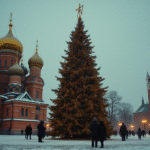A Personal Journey of Reconnection
Mariana, a woman who had long battled anxiety and a persistent feeling of emptiness, found solace not through conventional therapy or medication but through a psilocybin-assisted therapy session. This experience, conducted in a safe environment with professional guidance, was described as more of a reconnection than a trip.
Distinguishing Spirituality from Religion
In an increasingly skeptical world, discussing faith can be uncomfortable. However, more people and research are differentiating between organized religion and personal spirituality. While religion imposes external structures, spirituality emerges from within.
Spirituality, understood as a connection to something greater than oneself—be it nature, the cosmos, the divine, or the mystery of existence—has been shown to be a protective factor in mental health. It’s not about believing in a named deity but cultivating a sense of purpose, belonging, and transcendence.
What Does Neuroscience Say?
Neuroimaging studies have identified brain regions involved in profound spiritual or mystical experiences. Neurologist Andrew Newberg, a pioneer in neurotheology, has documented how practices like meditation, prayer, and ecstatic states activate specific areas such as the parietal lobe (associated with self-perception) and the frontal lobe (related to attention and judgment).
During intense meditation or prayer experiences, a reduction in blood flow to the right parietal lobe has been observed, leading to a loss of separation between oneself and the universe—a commonly described mystical union.
Studies led by Brick Johnstone at the University of Missouri suggest that individuals with damage in this region report higher levels of spirituality, raising intriguing questions about the brain’s architecture of the sacred. Even the hypothesis of a “God gene” (VMAT2) proposed by Dean Hamer, though controversial and inconclusive, has been posited.
Mysticism as a Therapeutic Prognosis
One of the most revealing findings in psychedelic psychiatry is that the spiritual or mystical intensity of the experience predicts therapeutic outcomes. It’s not just about “seeing colors” or “reliving the past”; when ego dissolves, a sense of unity with everything or an unconditional love state occurs, something profound within us seems to reorganize.
Roland Griffiths’ team at Johns Hopkins University used the 30-item Mystic Experiences Questionnaire (MEQ-30) to measure intensity during psilocybin sessions. In patients with treatment-resistant depression or anxiety related to end-of-life, those reporting intense mystical experiences showed sustained clinical improvement, even months after a single session.
The New Faith Nameless
However, there’s something we should be concerned about: what do today’s younger generations believe?
Global surveys show a clear trend. Younger generations are abandoning organized religions. In countries like the US, UK, or Mexico, the percentage of young people identifying as “non-religious” or “spiritual but not religious” has grown rapidly. Many adolescents today grow up without a narrative reminding them they are part of something greater.
The issue isn’t leaving religion behind; it’s losing all connection with the sacred. When traditional belief systems crumble and there’s nothing to replace them, a void emerges. And spiritual vacuity, like emotional vacuity, seeks to fill itself in any way: hyperconnectivity, compulsive consumption, nihilism, or even violence.
Anthropology has documented that every human culture seeks, in some way, a relationship with the divine. Not because we all believe in a god, but because the sacred—that which cannot be bought, explained, or controlled—gives structure and meaning to existence.
Without rituals of passage, silence, mystery, or that experience of surrender capable of softening even the hardest heart, perhaps there lies a crucial part of the contemporary crisis: an overstimulated mind and a completely neglected soul.
Speaking of spirituality again, without dogmas, guilt, or hierarchies, is an unspoken urgency. Not to proselytize, but to reconnect. To remember that science can explain the “how,” but not always the “why.”
I would love to hear your thoughts or experiences related to this topic. Let’s keep the conversation going; you can email me at [email protected] or reach out to me on Instagram at @dra.carnamezcua. Until next time!






